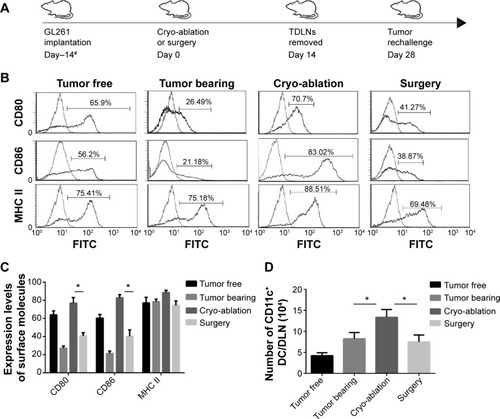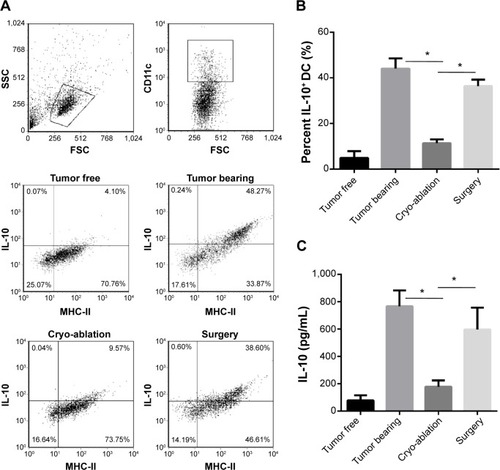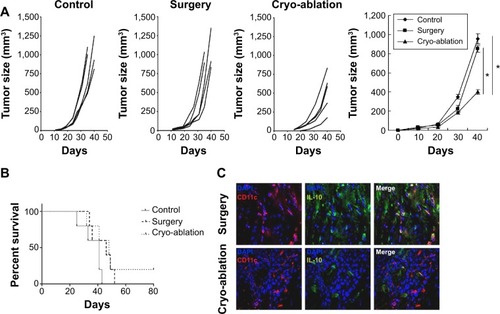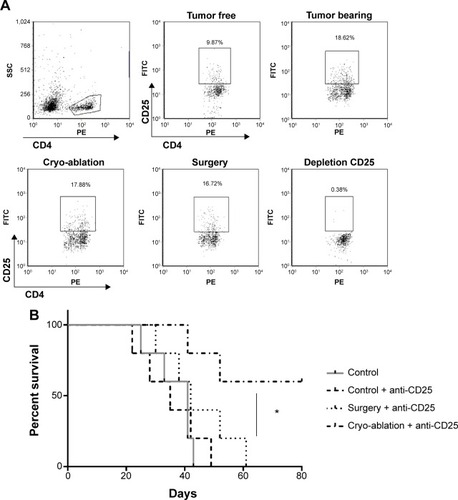Figures & data
Figure 1 Alteration in numbers and phenotype of DCs in TDLNs after cryo-ablation in glioma mice models.
Abbreviations: DCs, dendritic cells; TDLNs, tumor-draining lymph nodes; DLN, draining lymph node; FACS, fluorescence activated cell sorting; ANOVA, analysis of variance; SEM, standard error of the mean; MHC, major histocompatibility complex; FITC, fluorescein isothiocyanate.

Figure 2 Cryo-ablation converted the expression of IL-10 in TDLN-DCs.
Abbreviations: IL, interleukin; TDLN, tumor-draining lymph node; DCs, dendritic cells; FACS, fluorescence activated cell sorting; ELISA, enzyme-linked immunosorbent assay; SEM, standard error of the mean; MHC, major histocompatibility complex; FSC, forward scatter; SSC, side scatter.

Figure 3 The capacity of DCs to stimulate T cells enhanced after cryo-ablation.
Abbreviations: DCs, dendritic cells; CFSE, carboxyfluorescein diacetate succinimidyl ester; FACS, fluorescence activated cell sorting; ANOVA, analysis of variance; SEM, standard error of the mean; FITC, fluorescein isothiocyanate.

Figure 4 Cryo-ablation could delay tumor growth in tumor rechallenge and reduce the expression of IL-10 in tumor-infiltrating DCs.
Abbreviations: IL, interleukin; DCs, dendritic cells; DAPI, 4′,6-diamidino-2-phenylindole; ANOVA, analysis of variance; SEM, standard error of the mean.

Figure 5 Depletion of Tregs improves the survival rate of cryo-ablated mice.
Abbreviations: FACS, fluorescence activated cell sorting; FITC, fluorescein isothiocyanate; PE, phycoerythrin; SSC, side scatter.

